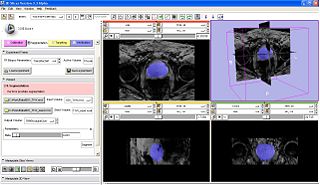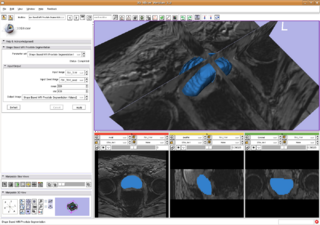ProstateSegmentationAHM2009
 Return to Project Week Main Page |
Key Investigators
- Gabor Fichtinger, Purang Abolmaesumi, David Gobbi, Siddharth Vikal; Queen’s University
- Allen Tannenbaum, Yi Gao; Georgia Tech
- Katie Hayes, Brigham and Women's Hospital
Objective
For the task of prostate segmentation, we provide two tools: 1. shape based and 2. semi-automatic random walk based. The goal is to put both algorithm into Slicer3 as command line modules.
Approach, Plan
Algorithm 1. is a Bayesian Shape based segmentation. The shape of prostates are learned and then the new image is segmented using the shapes learned. Algorithm 2. is based on the Random Walks segmentation algorithm. It need more human input but the result could be interactively improved arbitrarily close to user's expectation.
Progress
Algorithm 2. is already in the form of command line module. Algorithm 1. is also ready to be ported in.
The objectives for the project week are 1. Integrate algorithm 2 (which is currently a command line module) into Trans Rectal Prostate biopsy interactive loadable module 2. Create a command line module for algorithm 1. 3. Improve the algorithm for better segmentation performance.
Objective 1 achieved: We have integrated Algorithm 2 (random walk segmentation) inside the interactive loadable module Trans rectal prostate biopsy module

